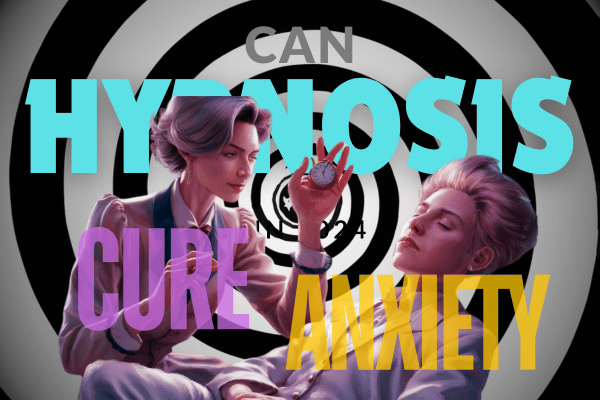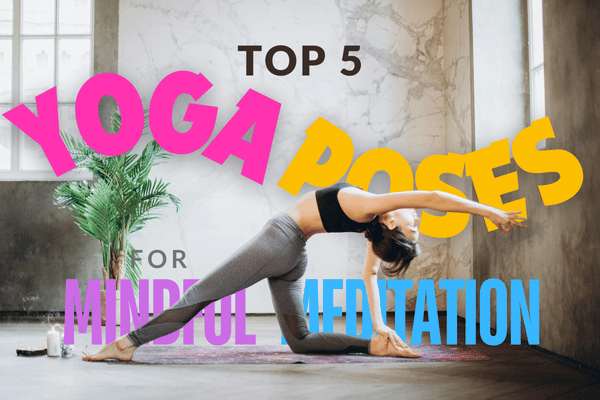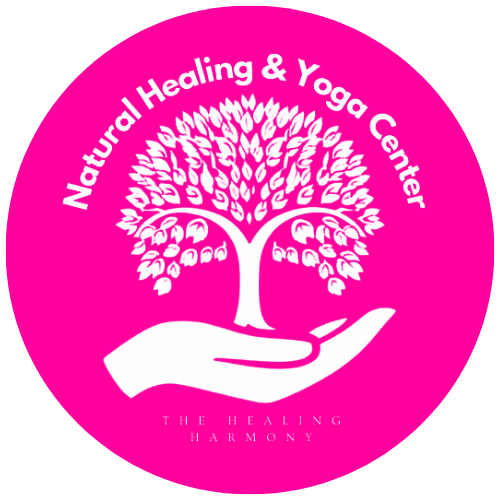Yoga has become popular worldwide, with millions of people practicing it. If you’re new to yoga or experienced, finding the right guidance is important. With so many online yoga blogs, deciding which ones to choose can take time. In this article, we’ll explore the top 10 yoga blogs that consistently provide valuable insights, guidance, and inspiration. These blogs cover yoga poses, mindfulness tips, and lifestyle advice. This article in Non-Promotional, we are not promoting mentioned/listed sites. This is totally an Informational article used for guiding people 1. Yoga Journal Blog If you’re interested in yoga, you should check out the blogs on Yoga Journal. This blog has been around since the 1970s and covers a wide range of topics, from yoga poses to meditation practices. If you want to learn about yoga history or improve your practice, you’ll find helpful articles here. 2. DoYouYoga Blog DoYouYoga is not just a blog. It’s a place where people share helpful tips about yoga, fitness, and being healthy. Lots of yoga teachers and health experts write for it, so you can learn a lot about living the yoga lifestyle. 3. The Yoga Nomads The Yoga Nomads blog is for people who enjoy both yoga and traveling. It covers everything from teaching yoga abroad to living a simple, yoga-focused life. Digital nomads and yoga teachers find it especially helpful. 4. Yoga by Candace Candace’s blog, Yoga by Candace, is known for its easy-to-follow tutorials and honest discussions. It provides videos, and wellness tips, and focuses on self-care, making it valuable for both beginner and experienced yogis. 5. Elephant Journal’s Yoga Section Elephant Journal has a wide-reaching wellness blog, with a standout yoga section. The blog is known for its honest approach and covers not only yoga poses but also the deeper aspects of yoga philosophy and lifestyle. 6. The Balanced Life The Balanced Life combines yoga and Pilates with a holistic approach to wellness. Her blog is ideal for anyone seeking to balance a hectic schedule with a dedicated yoga and fitness routine. With a relatable tone and realistic approach, it’s considered one of the top yoga blogs of all time. 7. YouAligned Blog If you want a one-stop shop for yoga, YouAligned is the place to go. This blog offers a mix of product reviews, yoga routines, and lifestyle content. Whether you’re looking for the best yoga mats or need a new workout, YouAligned has something for every yoga enthusiast. 8. MindBodyGreen Yoga Blog MindBodyGreen is a major player in the wellness world, and its yoga section stands out. It covers a wide range of topics from nutrition to mindfulness, providing a comprehensive approach to yoga. It’s a great resource for anyone looking to incorporate yoga into all aspects of their life. 9. Kino Yoga Kino MacGregor is a well-known Ashtanga yoga teacher who shares her insights on the Kino Yoga blog. Her blog posts include personal stories, yoga tutorials, and spiritual insights. If you want to improve your yoga practice, Kino’s blog offers valuable depth and inspiration. 10. YogaGlo Blog YogaGlo offers online yoga classes and a blog filled with valuable information. The blog covers a wide range of topics from yoga techniques to wellness advice, making it beneficial for both beginners and experienced practitioners. It includes diverse content, discussing anatomy and the mental benefits of yoga. Natural Healing & Yoga If you’re looking for a comprehensive resource that combines yoga with natural healing techniques, be sure to check out naturalhealingandyoga.com. This blog offers a wealth of insightful content on yoga, natural healing, and holistic wellness. What sets this blog apart is the opportunity to learn from a yoga specialist who is also a reiki master and hypnotherapist. The unique combination of yoga, reiki, and hypnotherapy can provide a truly transformative experience for those seeking to enhance their well-being on physical, mental, and spiritual levels. Don’t miss the chance to explore this valuable resource and expand your understanding of the interconnected practices of yoga, natural healing, and holistic wellness. Conclusion These top 10 yoga blogs of all time represent the best of what the yoga community has to offer. If you’re looking for inspiration, education, or a sense of community, these blogs will guide you on your journey. Dive into these rich resources and let them deepen your practice and enhance your well-being. Whether you’re in search of poses, mindfulness techniques, or lifestyle inspiration, these yoga blogs of all time will support your journey. Happy reading—and happy practicing!
Can Reiki Help with Depression & Anxiety?
Depression and anxiety are two of the most prevalent mental health issues, affecting millions of people worldwide. Traditional treatments include medication and psychotherapy, but many individuals are now seeking out alternative therapies such as Reiki. But, can Reiki help with Depression and Anxiety? This article will delve into whether Reiki can aid in alleviating depression and anxiety, explain how it works, and outline what to anticipate in terms of the number of sessions required. Understanding Reiki: Reiki is a type of energy healing that started in Japan in the early 20th century. The word “Reiki” comes from two Japanese words: “Rei,” meaning universal, and “Ki,” meaning life energy. Practitioners think that by using this universal life energy, they can help with physical, emotional, and spiritual healing. During a Reiki session, the Reiki Master puts their hands lightly on or just above the client’s body in specific positions. The goal is to pass on healing energy, which can help balance the body’s energy and remove blockages that may be causing physical or emotional distress. How Reiki Works for Depression and Anxiety: Please keep in mind the following information: Reiki aims to help people relax, reduce stress, and improve overall well-being. It can be especially helpful for those dealing with depression and anxiety. The process generally involves the following steps: Preparation: The client lies down fully clothed in a comfortable, quiet environment. Energy Transfer: The practitioner gently places their hands on or above the client’s body in a series of positions, often starting at the head and moving down to the feet. Relaxation: The client may feel warmth, tingling, or deep relaxation as the energy flows. It is believed that by restoring balance to the body’s energy fields, Reiki can help alleviate the symptoms of depression and anxiety. This might include reducing feelings of sadness, hopelessness, worry, and panic. Effectiveness of Reiki for Depression and Anxiety: The scientific research on Reiki is still emerging, but several studies and anecdotal evidence strongly suggest that Reiki can have significant benefits for mental health. Some of these reported benefits include: It’s crucial to note that Reiki is considered a complementary therapy. While it should not replace traditional medical treatments, it can be used alongside them to enhance overall care. How Many Reiki Sessions for Anxiety and Depression? Considerations for the number of Reiki sessions required include: It is often recommended to begin with a series of 4-6 sessions. Spaced one to two weeks apart, to evaluate progress. Some individuals may opt for regular sessions to maintain and support their well-being. Finding a Qualified Reiki Master: To experience the potential benefits of Reiki for depression and anxiety, it’s important to find a qualified practitioner. Look for someone who has received proper training and certification from a reputable Reiki organization. Personal recommendations, online reviews, and initial consultations can also help you find a practitioner who is a good fit for you. I am a Reiki Master and I have been practicing Reiki for over 27 years. I’ve received training and certification from many organizations. I believe in the therapeutic benefits of Reiki for depression and anxiety. I’ve seen positive results in many of my clients. If you are interested in experiencing Reiki for depression and anxiety, feel free to reach out to me for an initial consultation. I can also provide you with personal recommendations and discuss how Reiki may benefit you. Conclusion: Reiki offers a gentle, non-invasive approach to help manage the symptoms of depression and anxiety. By promoting relaxation, reducing stress, and enhancing overall well-being, Reiki can be a valuable complement to traditional treatments. The number of sessions needed varies, but starting with a series of 4-6 sessions is a common approach. As always, it’s important to consult with healthcare professionals to determine the best treatment plan for your individual needs. Exploring Reiki as a complementary therapy can open new pathways to relief and healing for those struggling with depression and anxiety.
Can Hypnosis Cure Anxiety PERMANENTLY?
Anxiety is a widespread mental health issue that affects millions of people worldwide. Due to growing interest in alternative treatments, many people are exploring hypnosis as a potential solution. But can Hypnosis cure Anxiety PERMANENTLY? This article explores the effectiveness of hypnosis for anxiety, how it works, and associated costs. Understanding Hypnosis Hypnosis is a kind of therapy that helps you relax and focus. It puts you in a very focused state, so you are more open to suggestions. This can help you change how you act or think. People use hypnosis for different reasons, like managing pain, quitting smoking, losing weight, and reducing anxiety. How Hypnosis Works for Anxiety Stages of Hypnotherapy: The idea is that by entering this relaxed state, the person can bypass their conscious mind, allowing the therapist’s suggestions to take root more deeply. This can lead to changes in behavior, perception, and emotional responses. Effectiveness of Hypnosis for Anxiety Numerous research studies have indicated that hypnosis demonstrates promising efficacy in alleviating symptoms of anxiety. Particularly when used in conjunction with cognitive-behavioral therapy (CBT). The application of hypnosis facilitates enhanced control over anxiety. Improved relaxation capabilities, and reduction of physical manifestations of anxiety, such as tachycardia and muscular tension. However, it is imperative to acknowledge that the effectiveness of hypnosis may vary among individuals. Key determinants such as individual susceptibility. The proficiency of the therapist, and the specific manifestations of anxiety are influential factors that may impact the outcomes. We provide the best services for Hypnotherapy, guided by a professional Hypnotherapist with a keen knowledge of Hypnotherapy. Is Hypnotherapy expensive? The cost of hypnosis can vary widely depending on several factors, including the therapist’s experience, location, and the length and number of sessions required. On average, a single hypnosis session can range from $95 to $300. Some therapists offer package deals for multiple sessions, which can reduce the overall cost. However, we offer an affordable price range and plans to our patients with huge discounts available. Finding a Qualified Hypnotherapist If you’re considering hypnosis for anxiety, it’s crucial to find a qualified and experienced hypnotherapist. I am a professional and experienced hypnotherapist, and I have helped many clients overcome their anxiety through hypnotherapy. It’s important to find someone you feel comfortable with and who has a good track record of helping people with anxiety. If you have any questions or concerns about hypnotherapy for anxiety, feel free to ask. Conclusion Hypnosis can be a helpful tool for managing anxiety by changing negative thought patterns and promoting relaxation. While it may not work for everyone, it can reduce anxiety symptoms for many people. The cost of hypnosis varies, but finding a qualified therapist and possibly using insurance can make it more affordable. Like any treatment, it’s important to speak with a healthcare professional to see if hypnosis is the right choice for your specific needs. By exploring the potential of hypnosis for anxiety, you can take an informed step toward finding relief from this pervasive condition.
Top 5 Most Challenging Yoga Poses in 2024
5 Most Challenging Yoga Poses. Various factors make a yoga pose hard, such as a person’s flexibility, breath control, balance, stability, and much more. Natural Healing & Yoga Center can make you capable of performing these challenging yoga poses with the help of their professional staff and traditional methods. Here are the Top 5 Most challenging Yoga poses you should know in 2024. 5 Most Challenging Yoga Poses – How to perform properly: While performing this pose, the performer must loop their arms beneath both legs. Elevate your torso away from the Yoga Mat, and stretch your legs gently to both sides. 2. Scorpion Pose (Vrschikasana): The scorpion pose is counted as one of the most challenging yoga poses. It’s because of its high flexibility rate. While performing this pose, the exerciser should start with a forearm stand with both arms. Then try to bend their knees. Then flex their torso, and drop their feet above the top of their head, forming a scorpion shape. 3. One-Legged King Pigeon Pose II: I have included this yoga Pose in the Top 5 most challenging poses. This is because I have witnessed that most of my clients suffer in performing this pose correctly due to its extreme flexibility. This posture entails deep pushing, arching the spine, and stretching one arm back to support the foot. 4. Cat Pose Yoga NYT ( Tips from NYT experts): This yoga pose is one of the most basic yoga poses that is usually included in warmup. However I have witnessed many of my clients performing cat pose yoga NYT with uneven body postures. A proper way of performing Cat Pose yoga NYT – 1 of 5 Most Challenging yoga poses Extend your hands shoulder-width apart and keep your knees beneath your hips.Now take a deep breath while arching your torso area, raising your head upwards, pushing your hips upward.Now breathe deeply and pull your belly in, bending your spine and lowering your head down. By performing these steps you can master Cat Pose Yoga NYT. Handstand pose: This is one of the hardest yoga poses, as this yoga pose requires both focus and strength. While performing this pose use your arm power and core strength to lift your body upwards positioning your pelvis over your shoulders and wrist. To maintain better stability keep your both knees aligned with each other and look between the middle area of your hands. Conclusion: The difficulty of a yoga pose depends on the balance, flexibility, and core strength of an individual’s core body. A high degree of coordination is also a major cause of making a yoga pose difficult, as some yoga poses require a great level of coordination to complete various motions at once. Practicing yoga daily with consistency can highly reduce, yoga’s difficulty level as it will improve balance stability, flexibility, breath control, mental focus, and much more.
Top 5 Best Yoga Poses for Mindful Meditation (2024)
Top 5 Best Yoga Poses for Mindful Meditation. Yoga is a traditional exercise that has been practiced for more than a thousand years, according to the monk yoga offers mental clarity, inner satisfaction, and relaxation and has an amazing ability to combine physical positions with conscious meditation. Best tips for Yoga Poses for mindful meditation (suggested by experts ): Why does Yoga pose for mindful meditation matter? Your meditation position matters a lot because it greatly impacts mind relaxation and yoga efficiency and helps you stay focused. A person performing meditation according to his comfort, stability, and flow of energy. This will help him to stay focused and avoid discomfort and pain from interfering with his practice. Best Yoga poses for mindful meditation: Tree Pose (Vrikshasana): This pose specifically relaxes the mind and calms the whole body, for this, you have to, stand on one leg and press the sole of the other foot against your inner thigh. You have to balance and find your center by concentrating on your breath and inner calm. Child pose (Balasana): This is one of the most popular poses which is mainly performed for stretching and relaxation. Start performing this pose by Kneeling on the yoga mat by keeping your knees hip-width apart. Then fold forward with your arms out in front of you. You can stay in this position as long as your body is relaxed and you are calm. Mountain poses (tadasana): Mountain poses will help you to improve your balance, posture, and concentration. To do this, stand erect with your feet hip-width apart, grounded in the floor, Now roll your shoulders back to expand your chest, stretch your spine lift your arms above, and take deep breaths. Lotus Pose (padmasana): This pose is performed to meditate and control breath. To perform this, sit on the floor, flex the right leg on the knee, and using your hands place your right foot on your left thigh, now fold the leg at the knee. In last, again use your hands to bring your left foot to rest on your right thigh. Eagle pose (Garuasana): Wrap your arms around each other and cross one leg over the other. This stance will help you to build balance and mindfulness. What are some breathing techniques for meditation? Breath awareness: Concentrating on your breath while performing meditation can boost your overall meditation. Just like when we are in the gym and trying to make the muscle-mind connections for better muscle gains, similarly while doing yoga we have to focus on our breath as it flows in and out, experiencing the sensation of each inhale and exhaling, this technique will upgrade your overall yoga experience. Examine changes in your body: Noticing changes in your body while performing meditation can help you a lot in relaxing your body and staying focused during your meditation. Open monitoring: Simply monitor your thoughts and feelings without being engrossed in them, as, this will help you to gain awareness and separation from mental activity. Conclusion: Yoga positions play a vital role in developing your mental and physical health, as by controlling your breath and changing body poses you are controlling your blood flow and increasing flexibility and strength to lower stress and develop awareness. Ultimately Yoga positions facilitate self-discovery, strengthen mental health, regulate blood flow, and stress reduction, and lastly improve overall well-being.






